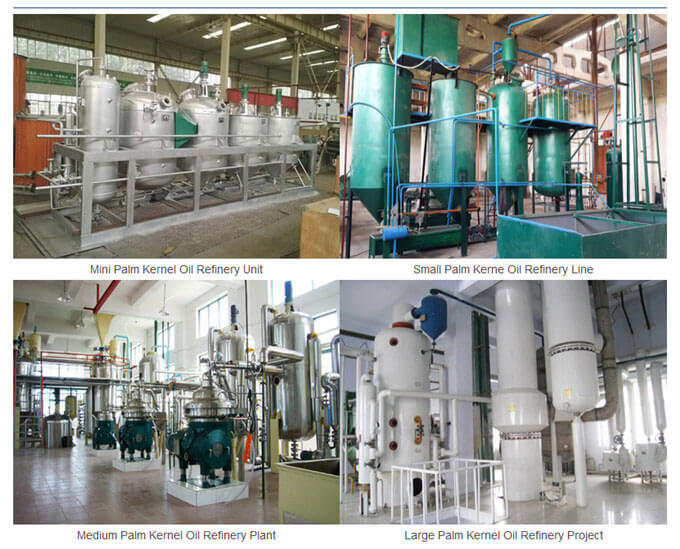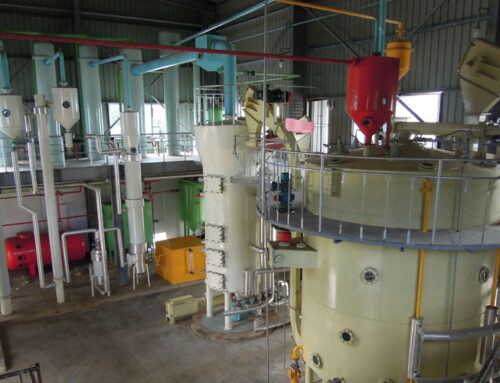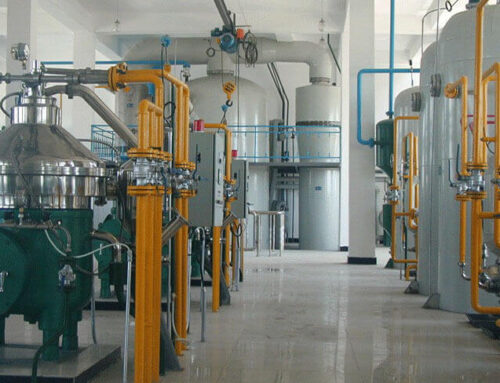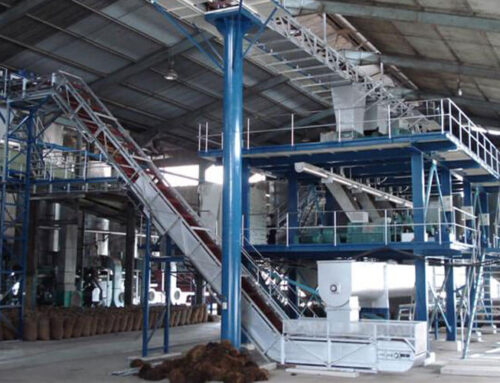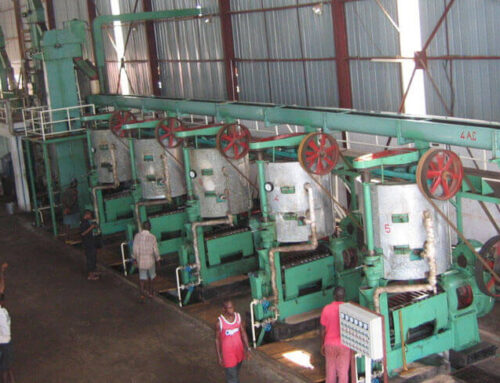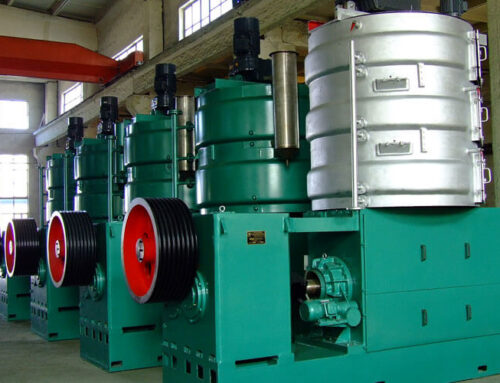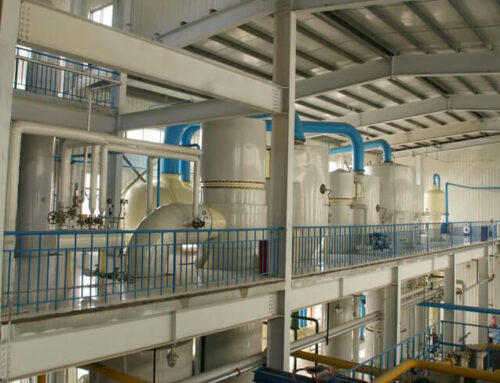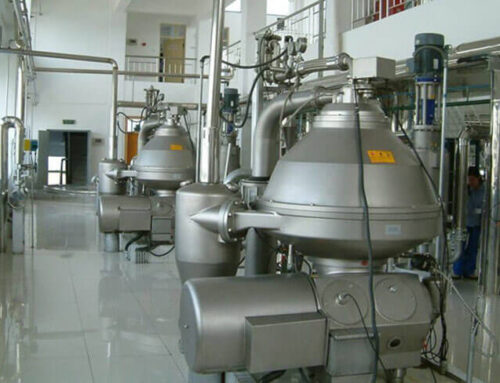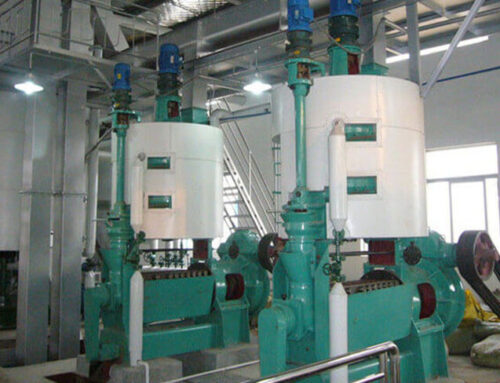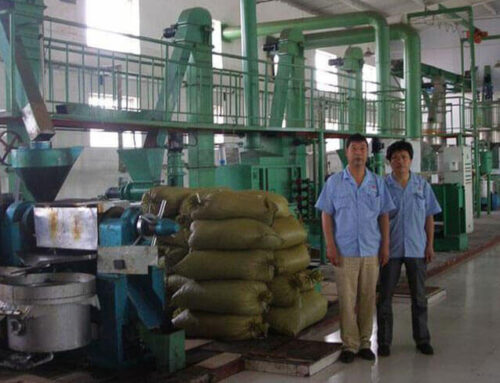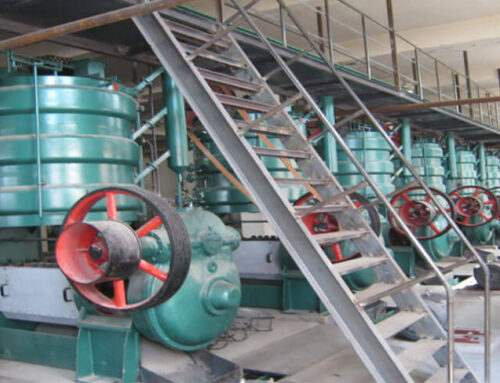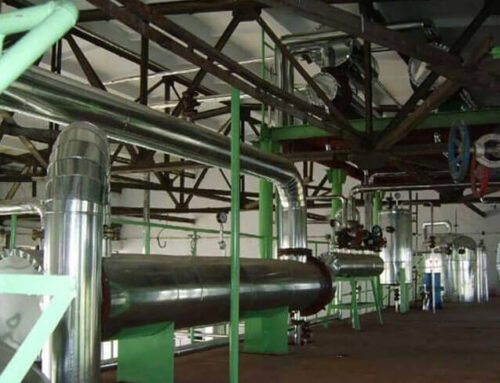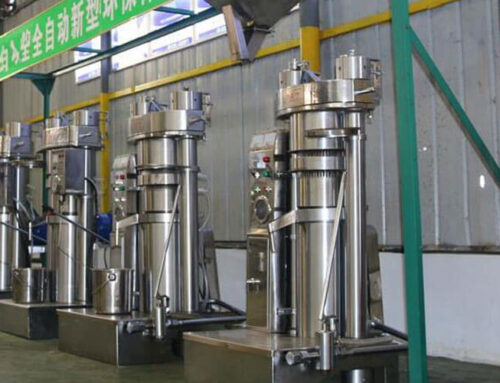Corn Oil Extraction Plant Overview
The corn oil extraction plant extracts oil from the corn germ by mechanical pressing or prepressing combined solvent extraction. We supply 1-1,200 TPD complete corn germ oil production lines. A corn oil production line, whether small or large-scale, is tailored to optimize the oil yield, quality, and cost-efficiency of corn oil. The complete corn oil production line includes the corn germ pretreatment and pre-pressing process, corn germ extraction process, corn germ cake solvent extraction process, and crude corn germ oil refining process.

Corn oil is extracted from the corn germ, which has a high oil content. During the process of producing corn bran, corn starch, or corn starch sugar, about 8%-12% of corn germ can be recovered, which can be used to make corn germ oil. The basic corn oil processing process and equipment are the same as the other oil materials. For small and medium-scale corn oil production plants, the mechanical screw oil pressing method is provided. For large-scale corn germ oil plants, the Pre-pressing & Solvent Extraction processing method is recommended.
Mechanical Screw Oil Pressing: Most used in small to medium-scale corn oil mill plants. The oil yield is around 70%.
Pre-pressing and Solvent Extraction: It is suited for large industrial corn oil mill plants. (the corn germ oil extraction rate can reach 98%.)
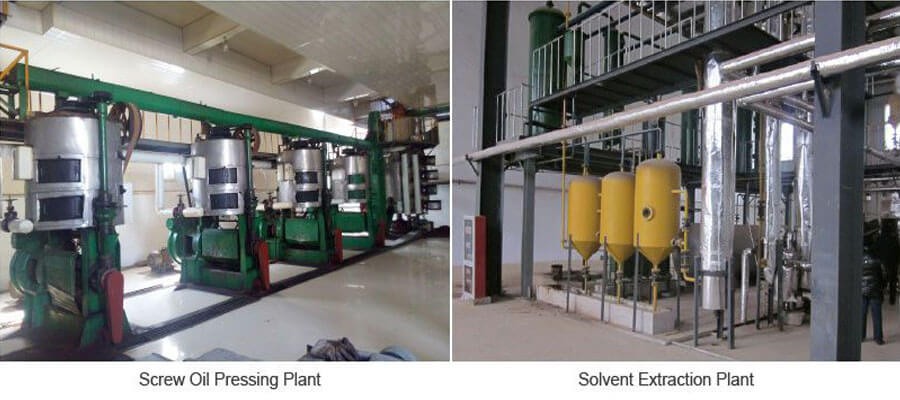
Small Corn Oil Production Line
Mechanical Corn Oil Pressing Method
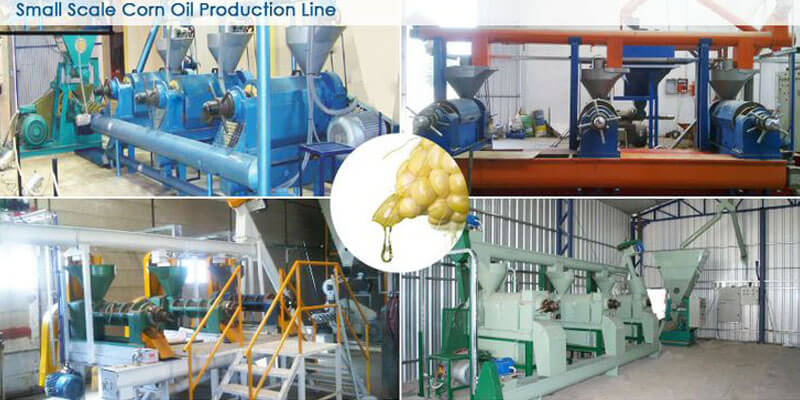
This small corn oil production line adopts a fully mechanical oil pressing process. Best choice for small-scale corn oil mill plants.
Low investment. Less labor and less land space are required. Only 2~3 workers are needed to operate the small corn oil production line.
Easy installation and operation. Just connect each machine to start your corn oil production.
Complete corn oil production function. Including corn pretreatment, cooking, oil pressing, filtering, and refining.
Process Flow: Maize-Germ → Screening (sieving machine) → Cooking (Roaster) → Oil Pressing (Corn Oil Press Machine) → Filtering (Filter Press) → Refining (Refinery Equipment) → Corn Germ Oil
Large Corn Oil Production Line
Pre-pressing & Solvent Extraction Corn Oil Mill Plant

This corn germ oil production line is designed for large-scale corn oil mill plants. The pressed cake from the mechanical pressing stage is sent to the solvent extraction plant. A solvent, usually hexane, is used to extract the remaining oil from the press cake. This extraction process dissolves the oil, resulting in a mixture of oil and solvent called miscella. The oil-rich miscella is desolventized by evaporating the solvent, which is then recovered and reused, leaving crude corn oil. The corn germ oil production process is similar to the rice bran oil production line. This corn oil extraction plant has a large capacity and short extraction time. The crude oil obtained has few impurities, shallow color, and high quality.
Key Equipment in Large Corn Germ Oil Production Lines
Corn Germ Cleaning Equipment: Removes impurities before processing.
Flaking Mill: Produces flakes to aid in oil extraction.
Vertical Cooker: Conditions and cooks corn germ flakes.
Mechanical Screw Oil Press: Pre-presses oil from corn germ.
Corn Oil Extractor: Solvent-based extractor for higher oil yield.
Desolventizer: Recovers solvent from the oil and meal.
Crude Oil Refining Units: Degumming, neutralizing, bleaching, and deodorizing tanks.
Dewaxing Filters: For removing waxes from oil, if necessary.
Corn Oil Storage Tanks: Store crude and refined oil until packaging.
Bottling and Packaging Line: Bottles and packs the oil for distribution.
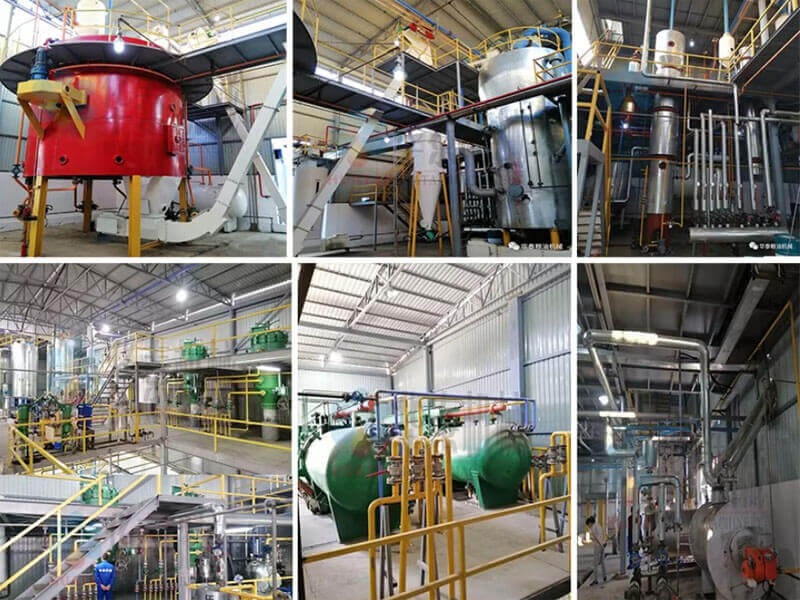
CONTACT US FOR A FREE QUOTE
Corn Germ Cleaning
To remove impurities such as dust, stones, and plant debris, ensuring high-quality oil production.
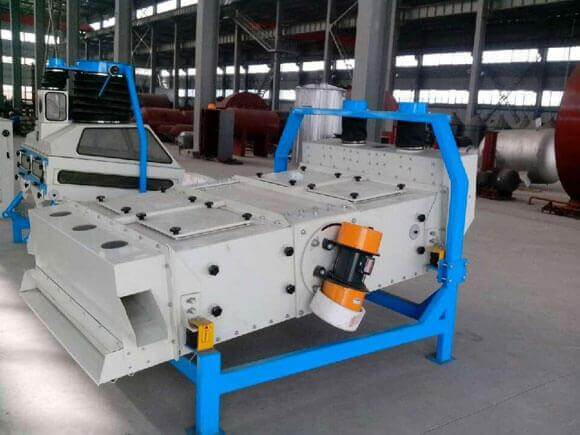
The corn germ recovered from corn grits is mixed with corn flour and corn bran which will affect the oil yield and oil quality, it needs to be sieved with a double vibrating sieve. The first layer of the screen removes large impurities, using 1.5 × 1.5 mesh/cm screens; the second layer removes corn flour, minced corn, and dander, with 4 × 4 mesh/cm screens. The 5 × 5 mesh/cm screens and 7 × 7 mesh/cm screens are optional to get deep cleaning. The corn germ recovered from corn starch is mixed with impurities such as dander and radicle sheath and needs to be continuously rinsed several times with clear water by a shallow pan or a launder. a cyclone separator is also a good choice. Contact us to get a free consultation.
Corn Germ Drying Softening
Adjust the moisture content and temperature to increase the plasticity.
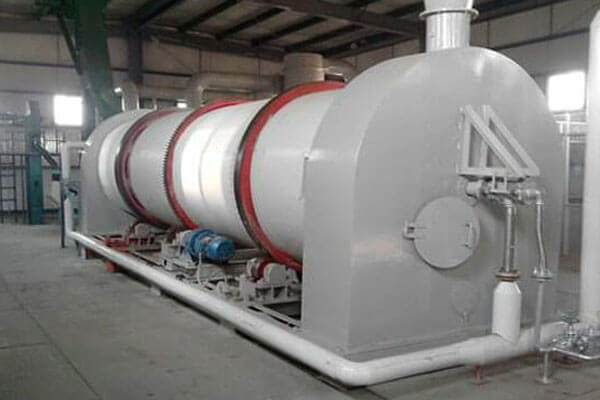
The corn germ recovered in the process of making corn grits and corn starches contains higher moisture content after cleaning, the enzyme activity is stronger and is easily propagated by microorganisms, which results in the deterioration and rancidity of oil esters, which affects the oil yield and quality of corn oil products. It will reduce the utilization value of the cake. The cleaned corn germ should be dried immediately until the moisture content is below 10% to maintain the freshness of the corn germ during storage and transportation. The corn germ is conditioned to adjust moisture content, making it easier to handle and maximizing oil yield in the pressing and extraction processes. It is also conducive to the flaking process and creates favorable conditions for reducing the residual oil in meals.
Corn Germ Oil Flaking
The cleaned corn germ is passed through flaking rollers to create 0.3-0.4 mm thin flakes, which break the cell walls and facilitate efficient oil cooking and pressing.
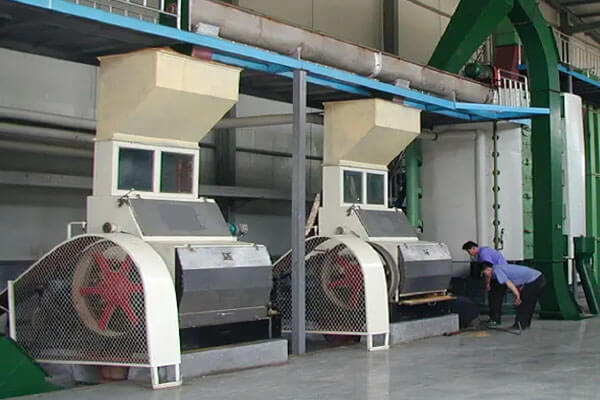
Corn Germ Oil Cooking
Denature the protein and make it solidify, agglutinate the oil, and reduce the viscosity. Prepare for oil pressing.
The flaked corn germ is cooked in a vertical cooker to enhance oil release, soften the material, and prepare it for pressing. Cooking also improves oil quality by removing certain unwanted components. During the whole process of steaming and cooking, the material is subjected to the double-action process of steaming and then frying, and at the same time, the moisture, temperature, plasticity, and elasticity of the material are slowly regulated and controlled. The moisture content of the flaked corn germ is more than 12% before it is steamed and cooked in the cooker. After 40 minutes to 50 minutes, the moisture content of the flakes is gradually reduced from 12% to 3%-4%.
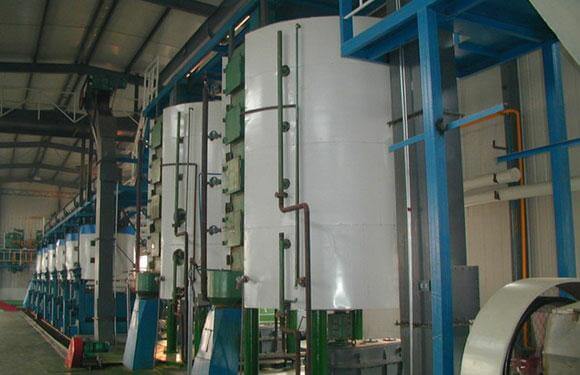
Corn Germ Oil Mechanical Pressing
The cooked corn germ flakes enter the screw oil press which integrates adjusting cooker to adjust the moisture content and temperature of the cooked materials. The crude oil is filtered to remove the impurities and then enters the refining workshop. The pre-pressed cake is sent to the solvent extraction workshop for oil extraction
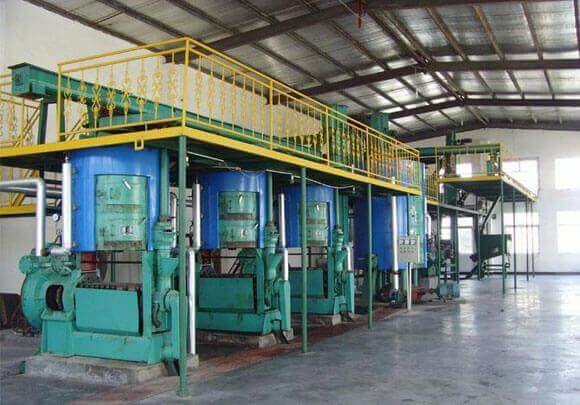
For smaller-scale corn oil plants, the cooked corn germ is mechanically pressed to extract oil. Mechanical screw oil presses can yield around 70-80% of the total oil in the corn germ, leaving some residual oil in the meal. This method may be used alone or as a preparatory step before solvent extraction in large-scale corn germ oil production lines, it depends on the oil mill plant size and desired extraction efficiency. The screw oil press is assembled with steaming and cooking equipment to get continuous operation. The pressed oil needs to be refined by hydration, Alkali refining, and deodorization to obtain high-quality refined corn oil.
Corn Germ Oil Solvent Extraction
The corn germ cake solvent extraction workshop uses an organic solvent to extract oil from the corn germ cake through soaking or spraying methods. There is only less than 1% oil content in the meal after solvent extraction. This section includes corn germ oil extraction, wet meal desolventizing, miscella evaporation and stripping, solvent condensation, and vent gas recovery.
Major Equipment: oil extractor, D.T.D.C desolventizing-toaster, evaporator, stripping tower, condenser, recovery system.
Solvent Extraction: A solvent, usually hexane, is used to extract the remaining oil from the press cake. This extraction process dissolves the oil, resulting in a mixture of oil and solvent called miscella.
Desolventization: The oil-rich miscella is desolventized by evaporating the solvent, which is then recovered and reused, leaving crude corn oil.
Meal Desolventizing: The remaining cake, now almost oil-free, is heated to remove any residual solvent, yielding a high-protein corn meal byproduct suitable for animal feed.
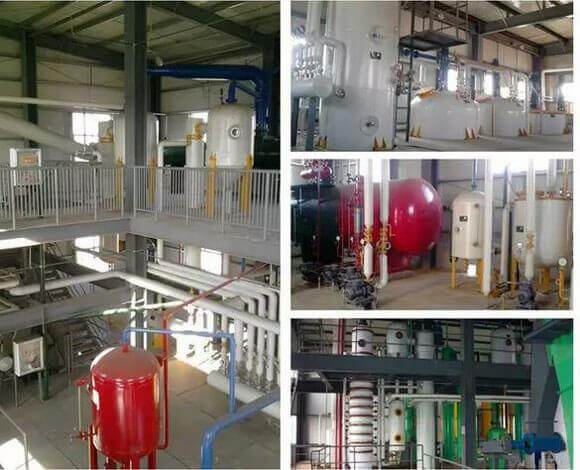
Corn Oil Refining Plant
The corn oil refining plant removes the unneeded and hazardous substances such as phospholipids, free fatty acids, wax, pigment, and unpleasant smell in the crude corn germ oil to obtain qualified refined oil.
Corn Germ Oil Refining Process: crude corn germ oil→degumming→deacidification→decolorization→dewaxing→deodorization→finished corn oil
Main Equipment: degumming tank, neutralizing tank, decolorizing tank, crystalizer, deodorization tower, centrifuge, filter, vacuum pump, heat-conducting oil furnace.
Degumming: Degumming removes phospholipids and other hydratable impurities, which are extracted by mixing the oil with water or acid. This step improves oil stability and quality.
Neutralization (Deacidification): The degummed oil undergoes neutralization to remove free fatty acids using alkali. This produces neutralized oil and soapstock as a byproduct.
Decolorization (Bleaching): Decolorization removes pigments and other color-related compounds by mixing the oil with bleaching earth or activated carbon. The mixture is then filtered to yield a lighter oil.
Deodorization: Using high-temperature steam, deodorization removes odors and any volatile components. This step improves the oil’s taste and extends shelf life.
Dewaxing: Dewaxing is sometimes performed to remove waxes, especially for oils to be stored in cooler climates, resulting in a clear, stable oil. The dewaxed oil enters the deaerator to remove the air and then enters the deodorization tower for deodorization. The deodorized oil is filtered to obtain the refined corn germ oil.
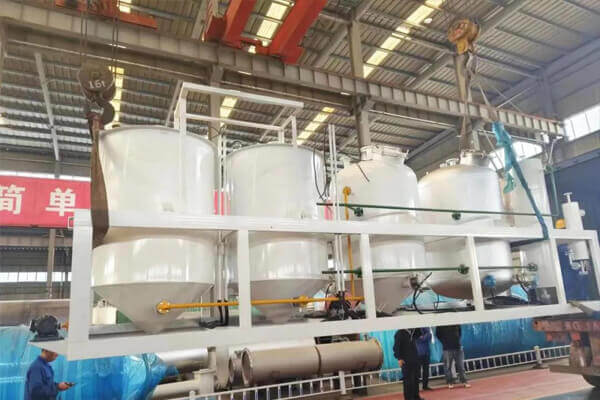
1-10TPD batch corn oil refinery equipment
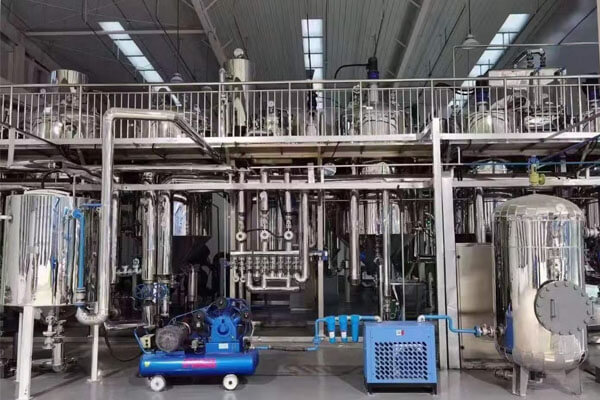
10 – 50 TPD semi-continuous corn oil refinery plant




